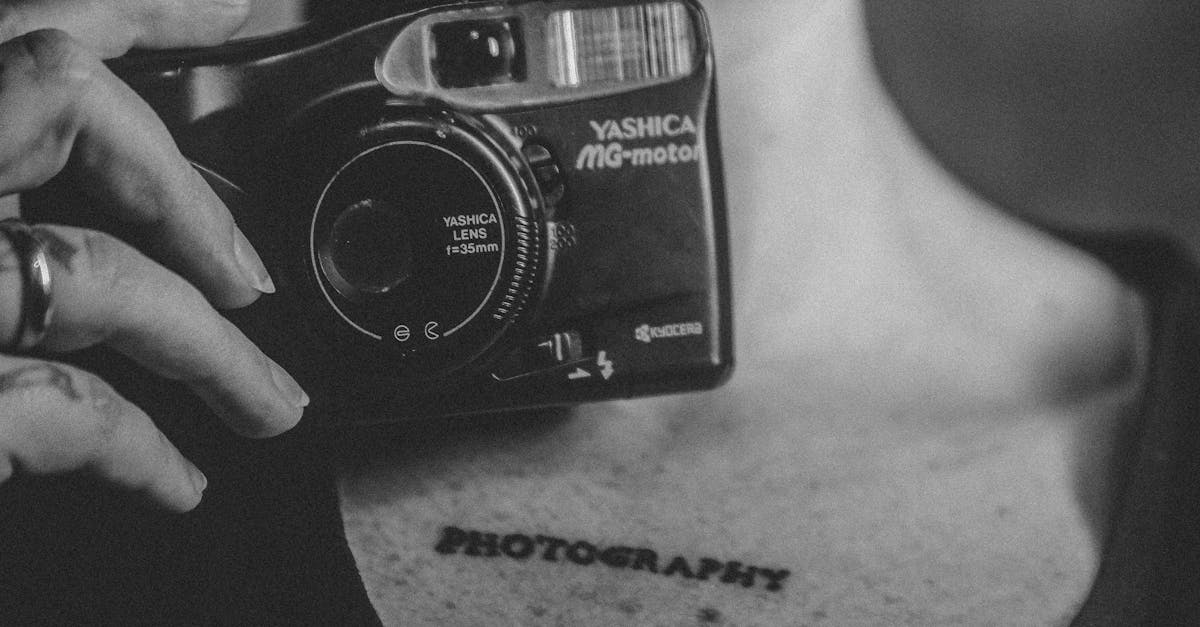
Best Practices for Operating and Maintaining Zoom Cameras in Drain Inspection
Table Of Contents
Optimizing Camera PerformanceWhat quality control measures should be implemented when testing drain cameras?
For optimal camera performance during drain inspections using Zoom cameras, it is crucial to ensure that the lens is clean and free from any debris that may obstruct the view. Regularly inspecting and cleaning the lens can prevent blurry or distorted images, allowing for accurate assessments of the drain condition. Additionally, positioning the camera at the right angle and distance from the inspection area can greatly enhance the clarity and detail of the footage captured. Experimenting with different angles and distances to find the optimal positioning for each inspection can significantly improve the overall performance of the camera.
Furthermore, adjusting the camera settings such as resolution and frame rate according to the specific requirements of the inspection can enhance the quality of the footage obtained. Higher resolutions may be necessary for detailed inspections, while adjusting the frame rate can help capture fast-moving objects or water flow more effectively. By customizing these settings based on the unique characteristics of each drain inspection, operators can maximise the camera's performance and ensure that the footage meets the desired standards for analysis and documentation.How important is checking for consistency in results when testing drain cameras?
Adjusting Lighting and Focus SettingsEnsuring Accurate RecordKeeping
isibility of key details within the drain.Accurate record-keeping also involves capturing clear and high-quality images or videos of the interior of the drain pipes. These visual records serve as valuable evidence of the conditions found during the inspection and can be shared with clients or other professionals for further analysis or decision-making. Additionally, timestamping these visuals along with detailed notes can provide a chronological timeline of the inspection process and aid in identifying patterns or recurring problems.
In addition to lighting, it is essential to fine-tune the focus settings on the camera to ensure that the images are sharp and in focus. Use the manual focus feature to adjust the focus ring on the camera lens until the desired clarity is achieved. Regularly checking and readjusting the focus settings throughout the inspection process can help maintain the quality of the footage captured by the camera.Documenting Findings and Recommendations
Ensuring Data SecurityDocumenting findings and recommendations is a crucial step in the drain camera testing process. It allows for a clear and detailed record of any issues discovered during the inspection. By documenting findings accurately, it provides a reference point for future inspections and ensures that all relevant information is captured for analysis.
To ensure data security when operating and maintaining Zoom cameras in drain inspection, it is essential to implement strict protocols. Firstly, always ensure that the camera software and firmware are up to date. Regular updates often include security patches that help protect against potential vulnerabilities that could be exploited by malicious parties. Additionally, it is important to set strong passwords for both the camera system and any associated software to prevent unauthorized access.Additionally, recommendations should be outlined clearly t
ged. Low battery levels can sometimes cause performance issues. Additionally, inspect the camera lens for any dirt or debris that may be affecting image quality. Cleaning the lens with a soft, dry cloth can sometimes improve the clarity of the footage.Checking for Consistency in Results
FAQSChecking for consistency in results is a crucial step when testing drain cameras. It is essential to meticulously review the footage captured during each inspection to ensure that there are no discrepancies or anomalies. By comparing the findings from multiple inspections of the same area, plumbers can identify any variations or deviations that may indicate underlying issues within the sewer system. Consistency in results not only validates the accuracy of the initial findings but also helps in developing a comprehensive understanding of the condition of the pipes and drains.
How can I optimize the performance of my Zoom camera during drain inspections?Regularly monitoring and assessing the consistency of results can provide valuable insights into the overall health of the plumbing system. By establishing a baseline for what is considered normal within the network of pipes, any deviations or abnormalities can be swiftly identified and addressed. This proactive approach to checking for consiste
Plumbing experts can collaborate effectively by sharing insights, discussing findings, and working together to develop solutions based on the camera inspections.
What should I do in case of an emergency situation while using a Zoom camera for drain inspections?When should professionals be consulted for complex drain camera testing cases?
In case of an emergency, remain calm and follow safety protocols, contact emergency services if necessary, and have a backup plan in place for continued inspection of the drain pipes.Professionals should be consulted for complex cases where additional expertise or specialized equipment is required to diagnose and resolve issues identified during the camera inspection.
What quality control measures should be implemented when testing drain cameras?Related LinksQuality control measures include calibrating equipment regularly, conducting regular maintenance checks, and ensuring that all operators are properly trained to use the drain cameras effectively.
How Zoom Cameras Enhance the Accuracy of Drain Inspection ReportsHow important is checking for consistency in results when testing drain cameras?Understanding the Technology Behind Zoom Cameras for Drain SurveysChecking for consistency in results is crucial to ensure the accuracy and reliability of the camera inspections, helping to identify any discrepancies or anomalies that may impact the overall assessment of the drainage system.
The Future of Zoom Camera Technology in the Field of Drain Inspections
Troubleshooting Common Issues with Zoom Cameras During Drain InspectionsRelated Links
Exploring the Applications and Limitations of Zoom Cameras in Drain SurveysEnsuring Accuracy in Drain Camera Calibration
Common Calibration Issues and Troubleshooting